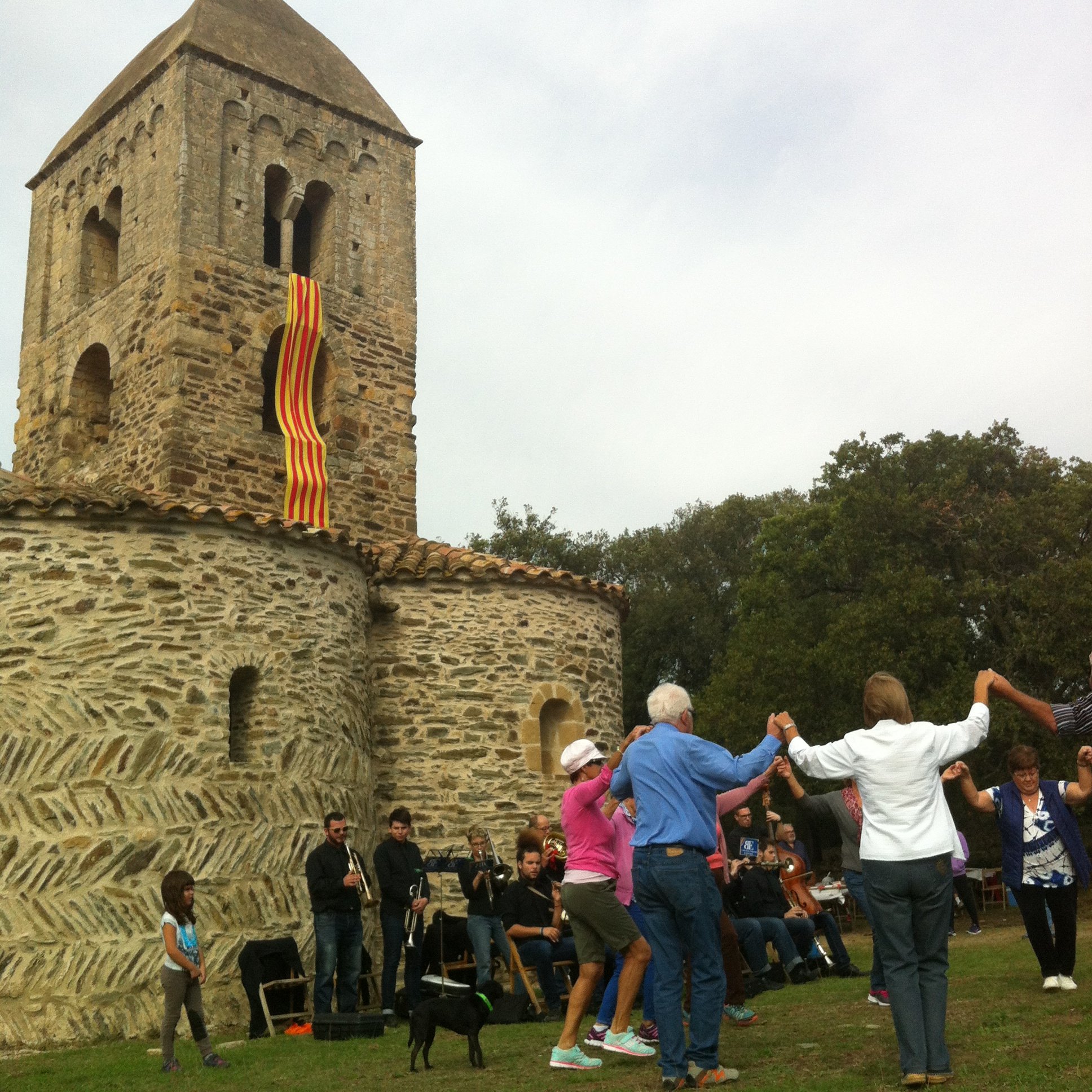Tió de Nadal.
El Tió, or "the log," is a beloved Catalan tradition deeply rooted in celebrating the winter solstice. Traditionally, families would gather on this special night to burn the log, symbolizing hopes for a bountiful harvest in the upcoming year. The ashes left behind by the burning log were then used to fertilize the soil, believed to bring fertility and prosperity to the land.
However, the significance of El Tió doesn't end with the burning ritual. It involves a heartwarming family tradition where the log is "fed" with sweets, nuts, and dried fruits in the days leading up to the solstice. On the anticipated evening, children eagerly gather around El Tió and sing songs, encouraging the log to "defecate" the treats it has been fed. This joyous moment is a cherished part of the celebration, fostering togetherness and warmth among family members.
El Tió, with its symbolic rituals and familial ties, reflects the deep connection Catalans have with their heritage and the cycles of nature. While rooted in pagan origins, this tradition remains a beautiful testament to unity, abundance, and the enduring spirit of Catalan culture.
A monkfish story.
The Monkfish (lophius piscatorius), in Catalan known as “rap”, is a fascinating species, typically found in sandy or muddy seabeds along the coast.
The traditional method of fishing them include the use of “palangre” (longline) and “tresmall” (trammel net), both of which have been practiced for generations. Both fishing methods require skill and knowledge of the behavior and habitats of monkfish. Fishermen often focus their efforts in areas where these are known to congregate, such as rocky bottoms or areas with abundant food sources.
A popular dish in Catalonia where you can find a monkfish is “Suquet de peix”, a stew that celebrates the flavors of the Mediterranean. To prepare this plate, monkfish is typically cut into thick medallions and simmered in a rich broth.
El cremat. A Spirited Catalan Tradition.
The “Cremat” holds a special place in Catalan tradition. It is a cherished beverage made with rum, whole coffee beans, sugar, lemon peel, and spices such as cinnamon and clove.
It was once the drink of choice for sailors, helping them endure the cold weather. Over time, it gained popularity beyond the coast, especially when accompanied by Habaneras.
The Golden Sun plant.
The Helicrysum Italicum, commonly known as the the Everlasting Flower (Sempreviva) has a distinctively Mediterranean fragrance, with reminiscences of curry and rosemary.
This herb with medicinal properties has also remarkable healing properties: antioxidant, antimicrobial and digestive.
The dried flowers are very decorative, and they have been used not only for healing but also to prevent insects into the house, due to their intense aroma.
La garoinada.
The “garoinada” is a traditional culinary event and specialty in the coastal town of Palafrugell that celebrates the sea urchin (known as “garoina” in Catalan), which is highly prized for its delicate and flavorful roe.
It takes place during the winter months (from January to March). Originally they are served raw, accompanied by crusty bread. The “garoinada” is not only a gastronomic experience but also a cultural celebration of the local maritime heritage and the bounty of the Mediterranean Sea.
Overall, it is an opportunity to enjoy the exquisite delicacy of fresh sea urchins and explore the coastal cuisine of Catalonia. It is a cherished event that showcases the region’s culinary treasures and provides a memorable dining experience for seafood enthusiasts.
Postre de músic.
The “Postre de músic” (musician’s dessert) is a traditional dessert consisting of a handful of assorted nuts, typically roasted almonds, hazelnuts, dried figs, apricots, and raisins. The usual presentation is on a dessert plate, with a small glass of Moscatel wine placed in the center.
We love presenting this dessert with the bottle in a ceramic plate designed by Paco Vilar and produced by Josep Matés (local ceramist).
Aplec de Fitor.
The Romanesque church of Santa Coloma de Fitor is believed to have been built in the 12th century and is considered an example of rural Romanesque architecture. It consists of a single nave with a semicircular apse and a bell tower. It is located in a remote area in the Gavarres Mountains in the province of Girona, surrounded by nature, and it offers a peaceful and picturesque setting. It is a cultural heritage that attracts visitors interested in history and architecture.
The southern apse is built in herringbone pattern (opus spicatum) which is very rarely seen.
If you come in October you might have the opportunity to celebrate the “Aplec” (gathering) and dance a “sardana”.
Celebrating habaneras. A mural Tribute.
In June 2016, Calella de Palafrugell, a charming coastal town in Catalonia, added a new artistic gem to its landscape. In honor of the 50th anniversary of the Cantada d'Havaneres, a mural paying tribute to habaneras and tavern singing was unveiled on the façade of a building on Villaamil Street.
Created using the “trompe-l’oeil” technique, the mural transports viewers to the enchanting world of habaneras. With its realistic portrayal of fishermen, soaring musical notes, local wildlife, and even the faces of beloved local singers, it captures the essence of Calella's year-round residents.
This vibrant project, undertaken by Pere Amilibia, serves as a daily homage to the town's inhabitants. As visitors and locals alike stroll along Canadell Beach, they will be greeted by this visual masterpiece, a retrospective journey through the evolution of habaneras in the Baix Empordà region. It is a reminder of the enduring power of music and the close bond between Calella and its maritime traditions.









